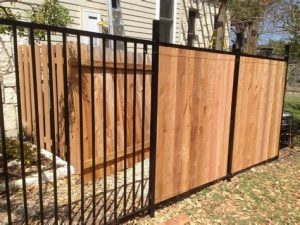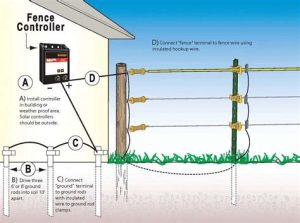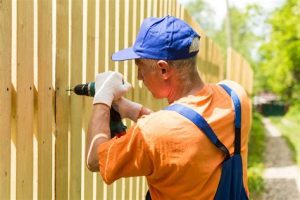Learn how to build a durable fence with expert tips on materials, measurements, preparation, assembly, and securing your installation effectively.Installing a wrought iron fence in a smaller space can enhance your property’s aesthetics while providing security and privacy. However, the process requires careful planning and execution to ensure a seamless fit. In this blog post, we’ll guide you through each crucial step, starting with how to choose the right materials that complement both your style and the unique dimensions of your space. We’ll cover the importance of accurate measurements and the preparation needed to create a solid foundation for your fence. From assembling the panels to securing them in place, you’ll learn practical tips and techniques tailored to smaller areas. Whether you’re a seasoned DIYer or a homeowner looking to elevate your curb appeal, this guide will empower you to tackle your wrought iron fence installation with confidence and ease. Let’s get started!
Choosing the Right Materials
When installing a rod iron fence in a smaller space, selecting the right materials is crucial to ensure both durability and aesthetic appeal. Rod iron is known for its strength and timeless beauty, making it a popular choice for residential fencing. However, the quality of the materials will significantly impact the overall outcome of the installation.
Firstly, it’s essential to choose high-quality rod iron that provides both strength and resistance to rust. Look for materials that have been treated with a protective coating to withstand the elements. This consideration is particularly important in areas with high humidity or unpredictable weather conditions.
In addition to the rod iron, don’t forget about the accompanying hardware. Choose sturdy posts, brackets, and screws that can support the weight and structure of the fence. Opting for galvanized or stainless steel hardware will prevent corrosion and prolong the lifespan of your fence. Finally, ensure you have the right tools for installation, as this will help make the process smoother and more efficient.
Measuring the Space Accurately
When it comes to installing a rod iron fence in a smaller space, accurate measurements are crucial. This not only ensures that the fence fits perfectly within the designated area but also prevents potential issues down the line. Begin by gathering the necessary tools, such as a measuring tape, stakes, and a level.
To start measuring, identify the corners of your designated fence area. Use stakes to mark these areas, ensuring they are securely placed in the ground. Once you have your corners established, measure the distance between each stake. It’s advisable to record these measurements on paper for easy reference. Make sure to take into account any obstacles or irregularities in the landscape that may affect the positioning of your fence.
Additionally, it’s essential to measure in a straight line. For this, you can use the 3-4-5 triangle method. This technique uses the Pythagorean theorem to create a right angle, ensuring that your measurements are accurate. For example, measure 3 feet along one line, 4 feet along the adjacent line, and adjust until the distance between these two points is exactly 5 feet. This will help you to confirm the corners are accurate, which is vital for a secure and aesthetically pleasing fence installation.
Preparing the Ground for Installation
When it comes to installing a rod iron fence in a smaller space, one of the crucial steps is preparing the ground properly. This ensures that your fence will be stable, durable, and aesthetically pleasing.
- Clear the Area: Begin by removing any grass, weeds, or debris from the area where the fence will be installed. This gives you a clean workspace to work with.
- Check for Undulations: Inspect the ground for any dips or elevations. You want to have a level surface for your fence to ensure it stands tall and straight.
- Mark the Layout: Use stakes or spray paint to outline where the fence will go. This will help you visualize the placement and make any necessary adjustments.
Next, it’s important to do some soil preparation. If the soil is too soft or too hard, it can affect the stability and lifespan of your rod iron fence.
- Test the Soil: By checking if the soil is compact and stable, you can determine if you need to make modifications.
- Level the Ground: Use a shovel to fill in any low spots and remove soil from high spots to create an even surface.
- Add Gravel: For extra drainage support, consider adding a layer of gravel where you’ll be installing the fence posts.
By taking these essential steps in preparing the ground, you will set a solid foundation for your rod iron fence, ensuring it not only looks great but also stands the test of time.
Assembling the Fence Panels
Assembling the fence panels is one of the most crucial steps in the process of installing a rod iron fence, especially when working within a smaller space. When you have limited room to maneuver, efficiency and precision become paramount. Here’s a step-by-step guide to ensure that your fence panels are assembled correctly.
First, begin by laying out all the materials you will need. This typically includes the fence panels, post brackets, screws, and a level. Having everything in one place will minimize movement, helping you save time and effort. It’s important to check that all the panels are free from defects and are the correct size for your intended space.
- Step 1: Attach the first fence panel to the post bracket using screws. Ensure the panel is aligned correctly.
- Step 2: Use a level to confirm that the panel is vertical. Adjust as needed before tightening the screws completely.
- Step 3: Continue attaching additional panels using the same method, checking alignment with each step.
- Step 4: Once all panels are up, double-check for any gaps or misalignments, and make adjustments if needed.
By carefully assembling your fence panels, you not only ensure a solid and secure installation but also enhance the aesthetic of the rod iron fence in your smaller space.
Securing the Fence in Place
After you have carefully assembled your rod iron fence panels, the next essential step is securing the fence in place to ensure it stands firm and provides the necessary security and aesthetic appeal.
- Use Concrete Footings: One of the most robust methods to secure a fence is by setting its posts in concrete. This helps to anchor the fence firmly into the ground.
- Check Alignment: Before the concrete sets, ensure all posts are aligned and vertically straight. Use a level to confirm this. Adjust as necessary.
- Bracing the Panels: If your fence is particularly tall or susceptible to strong winds, consider adding temporary braces while the concrete cures. This will keep everything properly aligned.
- Attach Panels Securely: Once the posts are set, securely attach the fence panels using the recommended fittings. Regularly check for tightness as this contributes to overall stability.
- Final Inspection: After installation, perform a thorough inspection to ensure everything is secure. Make sure to tighten any loose hardware and check the stance of posts.
By following these steps, you can ensure that your rod iron fence remains sturdy and appealing in your smaller space. Properly securing your fence will allow it to withstand the test of time and weather elements.
Remember that the durability of your iron fence largely depends on how well you secure it in place.
Frequently Asked Questions
What materials do I need to install a rod iron fence in a smaller space?
You will need rod iron fence panels, concrete for the footings, gate hinges and latch, a post hole digger, a level, a measuring tape, and possibly a masonry saw for cutting the panels.
How do I measure the area for the fence installation?
Begin by marking the corners of the area with stakes. Use a measuring tape to determine the length and width, ensuring that the measurements are accurate to avoid over or under purchasing materials.
What is the recommended depth for fence posts in smaller spaces?
For rod iron fences, it’s generally recommended to dig post holes at least 2 feet deep for stability, especially if the fence is over 6 feet tall.
How do I ensure my rod iron fence is level?
Use a level as you install each panel and post. Adjust the height of the posts to ensure that the entire fence runs straight and level across the designated area.
Can I install a rod iron fence without a professional’s help?
Yes, a rod iron fence can be installed as a DIY project if you have the right tools and knowledge. However, if you are not confident in your skills, hiring a professional can save time and ensure proper installation.
What is the best way to maintain a rod iron fence?
Regular maintenance includes cleaning the fence with soap and water, inspecting for rust, and applying a rust-resistant paint or sealant to protect against corrosion.
What are the benefits of a rod iron fence in a smaller space?
Rod iron fences are both elegant and durable, providing security without sacrificing visibility. In smaller spaces, they can create a sense of openness while still defining boundaries.





